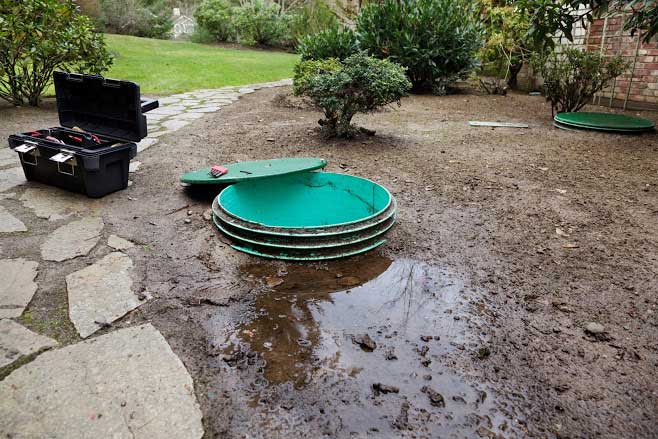4 Unseen Reasons for a Septic Tank Leak
A leak in your septic tank could mean that sewage seeps out and contaminates the soil. During wet weather, the same leak could mean your tank takes on too much water, like a sinking ship, due to water pressure from the saturated ground nearby.
Both of these situations are undesirable and may be undetectable until the problem is severe. Focusing on prevention by avoiding potentially damaging situations and scheduling regular inspections can help you avoid contaminated groundwater, an overwhelmed septic system, septic backup, and other serious issues.
Here are four unseen reasons why your tank could begin to leak.
1. Damaged Baffle
If one of your septic tank's baffles is compromised, it can cause a hole that allows water to escape from the septic tank. This can happen when a concrete baffle crumbles due to the gases in the tank, but it can also happen if the baffle wasn't sealed to the inflow or outflow pipe correctly or if it comes detached somehow.
In addition to allowing water to flow in and out between the tank and the soil, a damaged baffle can also create a huge attraction for tree roots, which can (metaphorically) come running when they smell a water source even if they weren't in the area before.
2. Crushed Pipe
The inflow and outflow pipes have to be secured to the septic tank tightly to form a seal, which also means they don't have a lot of give. The pipe can become damaged near or at its connection to the baffle, often because a vehicle or some type of machinery drove over the spot.
Even the septic tank itself can become damaged and develop a leak if heavy machinery drives over it. (In addition, driving over a septic tank could cause it to collapse right then or later on when you're not expecting it, either of which would be extremely hazardous.)
3. Rusting or Cracking
Depending on the type of septic tank you have, it may be susceptible to naturally occurring corrosion, either from rust or from the acid gas inside the tank. The concrete in septic tanks can also crack from pressure or from just being installed incorrectly.
If you've moved into your home recently and don't know what your septic tank is made out of, now is a good time to find out. Steel septic tanks in particular may often have an especially short lifespan, and a rusted tank can be a collapse hazard. Collapsed tanks can create sinkholes and of course require complete replacement. But even worse, a tank may not collapse until someone walks on it or tries to inspect it; this can be a serious risk to your health and life.
4. Tree Roots
If you're a gardener, you may find it counterintuitive that tree roots love getting inside your septic system. After all, raw sewage is so high in nitrogen that it ought to burn the plant roots. But that's not what happens (perhaps because there's so much wastewater that the sewage is diluted).
Instead, when roots get inside your septic tank, they grow and thrive, opening up a leak or widening a leak that was already there. Often, these roots access the tank through the seal around the lid, through damaged inlet and outlet pipes, or through vulnerable baffles.
Unfortunately, since this all happens underground, you can't tell what's happening unless you have the system dug up or get a video line inspection. You can see the tree above ground, but often, homeowners are surprised at the enormous reach of a tree's roots. You may not realize that the tree can reach any part of your septic system from where it stands.
These are some reasons for septic tank leaks that aren't visible from above ground, meaning you may not notice them until the leaking has developed into a serious problem. It's better to be safe than sorry, so if you suspect anything's wrong with your system, call out a reputable professional like Walters Environmental Services right away.





